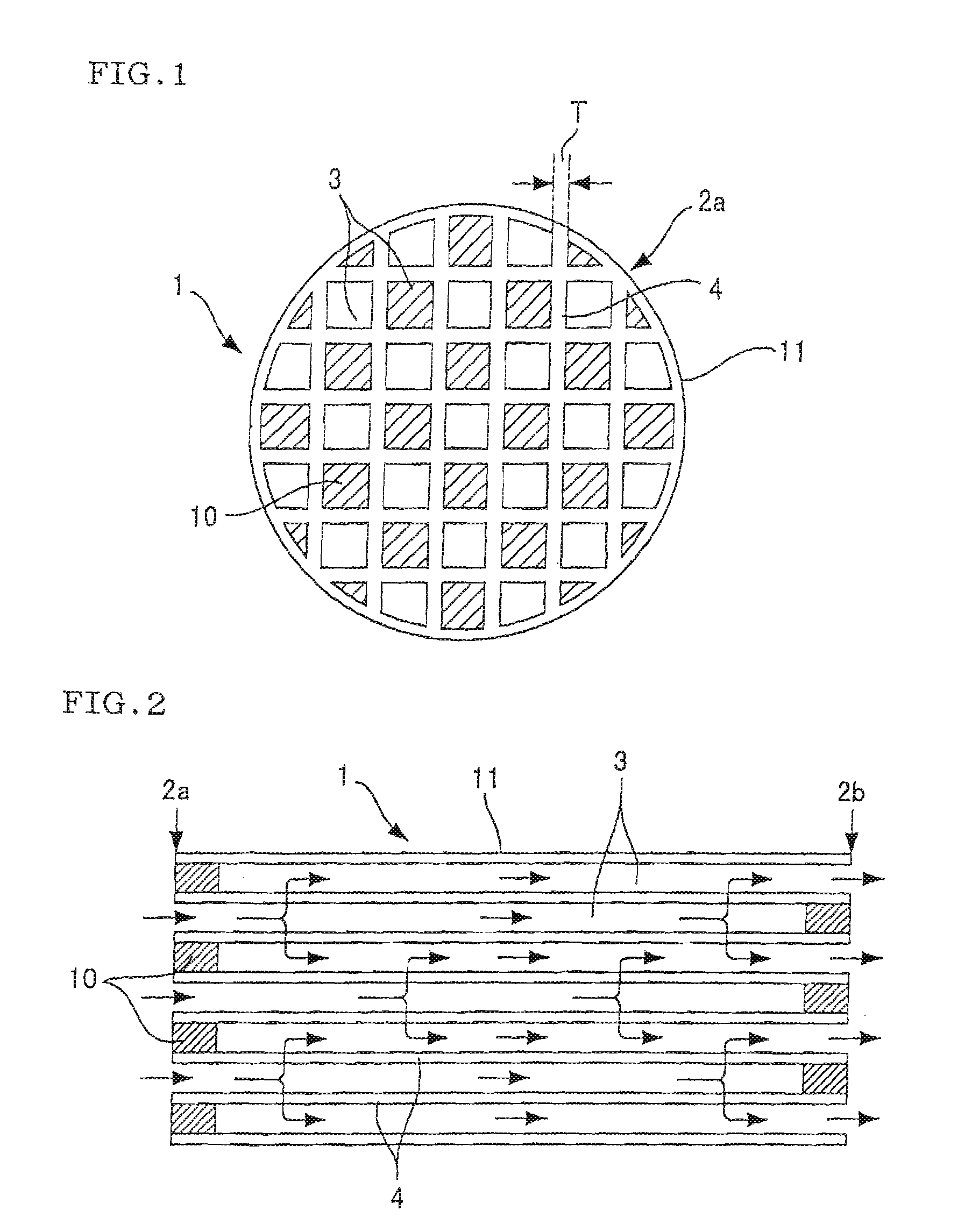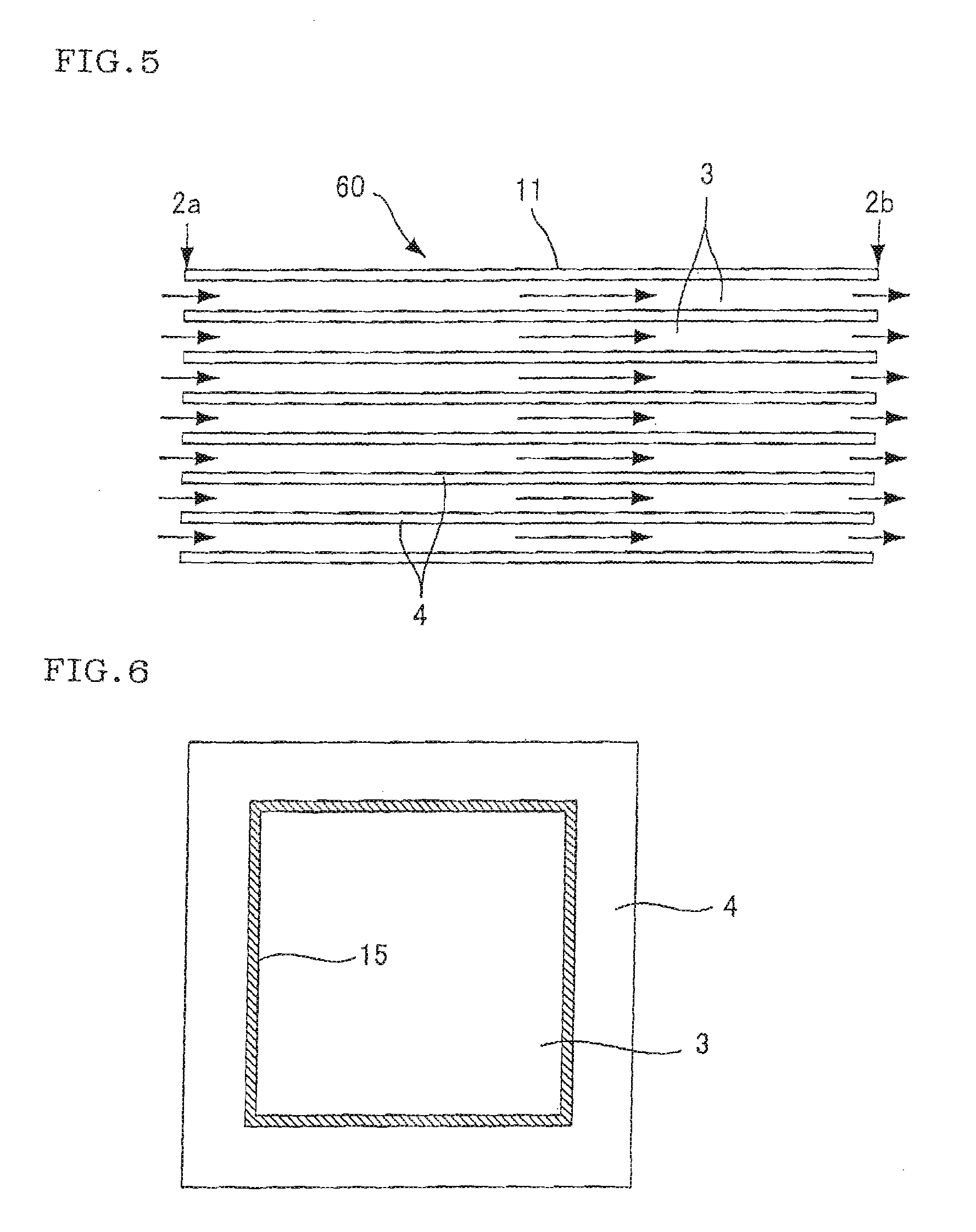Honeycomb catalytic structure, precoated support for producing honeycomb catalytic structure, and process for producing honeycomb catalytic structure
- Summary
- Abstract
- Description
- Claims
- Application Information
AI Technical Summary
Benefits of technology
Problems solved by technology
Method used
Image
Examples
examples
[0108]The present invention is described in more detail below by way of Examples. However, the present invention is in no way restricted to these Examples.
examples 1 to 22
, Comparative Examples 1-3
[0109]As the honeycomb structures for loading a catalyst layer thereon, there were prepared those each made of a material shown in Table 1 and having a cell structure, an average pore diameter and a permeability, shown in Table 1 (in Table 1, however, permeability data were shown only for representative Examples and Comparative Examples). The measurement methods for average pore diameter and permeability are described later. As to the external size of honeycomb structure, there were prepared two kinds for each Example and each Comparative Example, that is, a honeycomb structure of 5.66 in. (diameter)×6 in. (length) and a honeycomb structure of 1 in. (diameter)×2 in. (length). The former was named “honeycomb structure A” and the latter was named “honeycomb structure B”. Incidentally, in these honeycomb structures, each cell was plugged at either one end so that the cell ends were plugged alternately at each end face of honeycomb structure and that each end f...
PUM
| Property | Measurement | Unit |
|---|---|---|
| Fraction | aaaaa | aaaaa |
| Fraction | aaaaa | aaaaa |
| Fraction | aaaaa | aaaaa |
Abstract
Description
Claims
Application Information
 Login to View More
Login to View More - R&D
- Intellectual Property
- Life Sciences
- Materials
- Tech Scout
- Unparalleled Data Quality
- Higher Quality Content
- 60% Fewer Hallucinations
Browse by: Latest US Patents, China's latest patents, Technical Efficacy Thesaurus, Application Domain, Technology Topic, Popular Technical Reports.
© 2025 PatSnap. All rights reserved.Legal|Privacy policy|Modern Slavery Act Transparency Statement|Sitemap|About US| Contact US: help@patsnap.com



